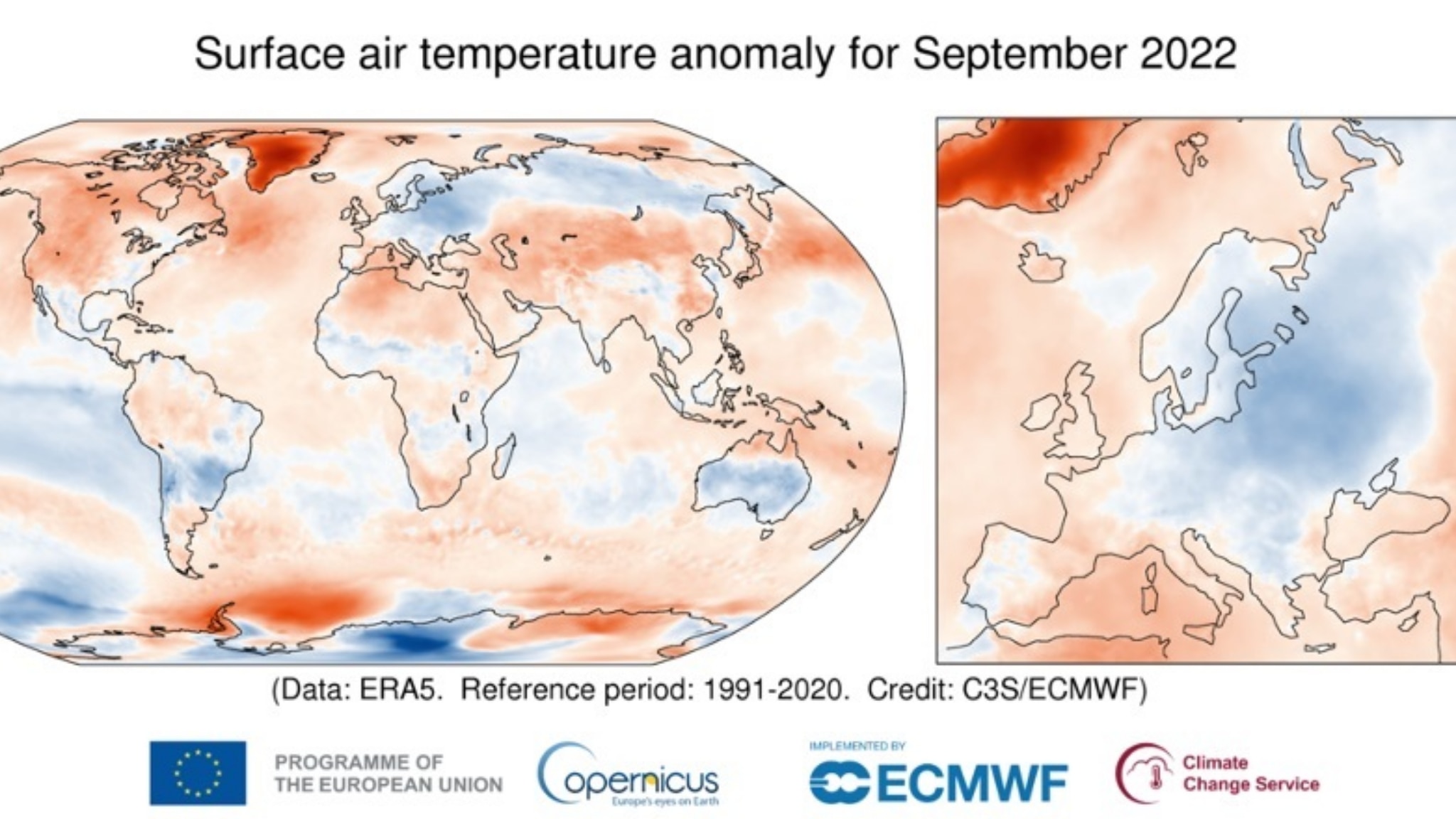Although the past month was colder than average in Europe, globally it was
the fourth warmest month of September on record
, with temperatures nearly 0.3 degrees above normal.
The most critical situation in Greenland, where some locations have exceeded the monthly average by more than 8 degrees, reaching the highest temperatures ever recorded for this time of year.
Yet another alarm on
climate warming
is launched by the latest Copernicus Climate Change Service (C3S) bulletin
,
implemented
by
the European Center for Medium-Term Weather Forecasts on behalf of the European Commission, funded by the EU.
The reported results are based on computer-generated analyzes that used billions of measurements from satellites, ships, planes and weather stations around the world.
The resulting map is striking for the
bright red that colors Greenland
, which experienced
the hottest September ever recorded since 1979
, and for the
blue
that indicates the thermal anomaly that affected
central Europe
as far as Russia: according to the surveys, in September the average European temperature was about 0.4 degrees lower than the average temperature recorded in the period between 1991 and 2020. Not only rising temperatures, but also negative peaks of cold, a proves that climate change is not synonymous with overheating but, in general, with thermal anomalies.
Copernicus
The Copernicus map relating to the Arctic area
As for the Arctic, sea ice was below average (by about 3%), although there were two noteworthy areas in the Siberian sector, where sea ice was above average.

